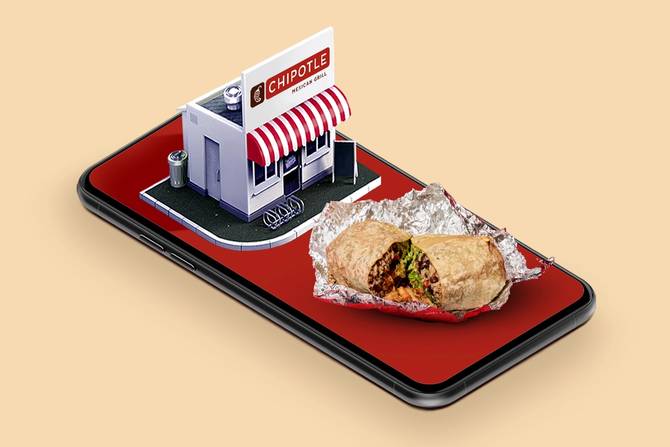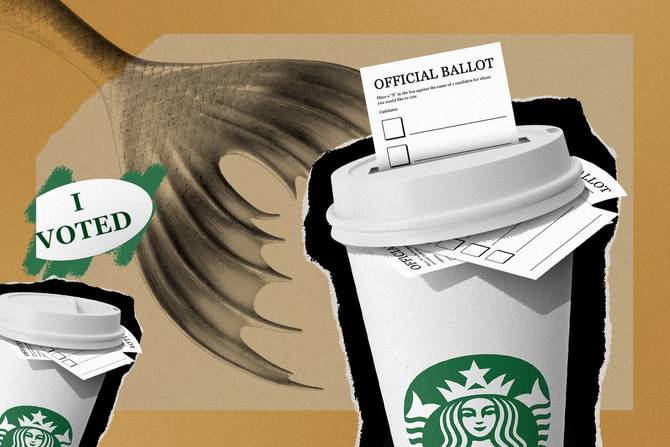Happy Tuesday! We’re four days out from the new year, and according to Shopify’s 2023 commerce trends report, we’re in for a year of exciting change. One thing we’re excited about? Brands are doubling down on partnering up, turning competitors into collaborators. Personally, we’re keeping our fingers crossed for a Trader Joe’s Prada grocery tote.
In today’s edition:
—Erik Wander, Jeena Sharma, Katishi Maake
|
|
Francis Scialabba
Continuing our chronological (for the most part) look at the year in retail through the lens of our own reporting, this is what happened in Q2, when we explored the beauty industry, the highly coveted (and targeted) Gen Z demo, and QSRs.
April
 Our theme of the month: The business of beauty Our theme of the month: The business of beauty
The beauty industry is kind of like a microcosm of retail’s biggest trends, and a sector that’s making inroads with tech. So, naturally, we were all over it, especially in April.
 Grabbing the headlines: Grabbing the headlines:
 Your favorite: Your favorite:
 Well worth the read: Well worth the read:
 Quote of the month: Quote of the month:
May
 Our theme of the month: The summer of Gen Z Our theme of the month: The summer of Gen Z
Gen Z is retail’s (and just about everyone else’s) big focus, so we examined their spending habits in the context of the start of the summer selling season.
June
 Our theme of the month: QSR Our theme of the month: QSR
We wouldn’t be covering retail if we weren’t covering QSRs, so we dedicated a month to digging just a little deeper.
Keep reading here.—EW
|
|
|
Looking for a revenue game changer? Text message marketing is one of the fastest-growing and most successful revenue channels for brands—and Wunderkind can help you ride the wave.
Wunderkind predicts that retail mobile commerce sales will more than double by 2025, accounting for 44.2% of retail e-commerce sales in the US. And their new SMS marketing guide can help your brand reach the 48% of consumers who prefer direct text communication from brands.
Turn to the Text Message Marketing Playbook to Boost Revenue to learn how leading brands use Wunderkind’s performance marketing engine to turn text messaging into a top revenue channel.
Whether you’re new to text message marketing or want to refine your strategy, Wunderkind’s got you covered.
Download the full guide here.
|
|
Adore Me
We asked our reporters, who play so well with others, to choose a favorite story from 2022 by a Retail Brew colleague.
As big as sustainability is in fashion, it seems not all consumers care about it—at least not AdoreMe’s shoppers. In October, Maeve Allsup spoke with the intimate apparel brand’s VP of innovation Camille Kress who talked about how the brand pivoted to sustainability after raking in ~$100 in revenue after 2019. Except, its customers didn’t.
In talking with Kress, in addition to AdoreMe’s VP of strategy, Ranjan Roy, Maeve tells an insightful story about how a well-known brand decided to incorporate sustainability into its model—not because consumers demanded it, but despite their rejecting it.
The piece succinctly and carefully explores the retailer’s journey to becoming the only US lingerie brand to become a Certified B Corporation—which determines the company’s social and environmental impact—and goes deep in deciphering AdoreMe’s internal ranking system that influences the footprint of its products (Spoiler: It’s not easy!). It’s also a brilliant study in understanding your consumers and the importance of using the right messaging when trying to build a purpose-driven brand:
When Adore Me first started thinking about sustainability, the hope was that it would be an immediate hit with consumers, Roy told Retail Brew. “We marketed fairly heavily with the assumption…that all consumers want to buy sustainable,” he said. “It was those early responses that shows…using the word ‘sustainable,’ making that the headline, isn’t necessarily going to convert people.”
But what are the magic words that ultimately worked for the brand? Well, you’ll have to keep reading to find out!—JS
Read the whole story by Maeve Allsup here.
|
|
Francis Scialabba
One of the ongoing trends in retail this year was the widespread adoption of labor movements throughout the country. After unionization efforts among Starbucks workers started picking up steam toward the end of 2021, our very own Jeena Sharma highlighted a number of other companies whose workers were making their own efforts.
For starters, Jeena’s piece does a great job of contextualizing the broader labor movement, highlighting unionization efforts at retailers such as REI, Hershey’s, and the aforementioned Starbucks. But where the piece shines is how it conveys to readers why this is happening and why now, in great detail. And the story not only offers a modern context, but also a historical one, looking to labor movements of the ’70s and ’80s, using a clear throughline:
Meanwhile, retailers across the country are boosting wages to keep the employees they have, unionization efforts or not. But [Francis Ryan, an assistant professor and labor historian at Rutgers University School of Management and Labor Relations,] sees it as a “spillover effect” in some cases, similar to how companies responded to organized labor in cities like New York, Philadelphia, and San Francisco in the 1970s, and ’80s. He noted that unionization rates in those places were high, so retailers without one often had to boost incentives and pay to attract talent.
It’s a piece that is wide-ranging, all-encompassing, and keeps the reader up to date on a phenomenon that affects the industry at large. 10/10, no notes.—KM
Read the whole story by Jeena Sharma here.
|
|
Rounding up some of the best retail tech reads of the year:
Yellow brick road: Digital world Roblox picked up a lot of steam in 2022, with major companies building out experiences and hosting events to get their brands in front of younger audiences. But navigating the 3D world and its community has proved challenging for some. “It’s the Wild West,” said Indiana University professor Keith Niedermeier. “This is for the edgy marketers who have the stomach to roll with these changes.” (Retail Dive, February.)
Beauty is only screen deep: L’Oréal moved quickly this year to gain a foothold in the metaverse, including filing for 17 virtual goods trademarks. “To us, Web3 is gaming, and there are big audiences there,” Asmita Dubey, L’Oréal’s chief digital and marketing officer, said. “The first thing we are doing is mapping the brands in the metaverse, because there are so many different metaverses. So the question is: Which brand fits where?” (Glossy, June.)
Rigging the system: How Bed Bath & Beyond ended up at the center of meme-stock mania, and what ultimately sent its stock crashing down. (The Atlantic, August.)
Dream machine: Two years into the pandemic, companies are still struggling with supply-chain and labor issues. Automation—from driverless trucks to delivery drones to warehouse floor robots—may ease those tensions. (the New York Times, September.)
Live wire: US live shopping was predicted to grow by $20 billion in 2022, and while it hasn’t yet gained the immense popularity it found in China, many retailers turned to the channel this year for engagement and entertainment. (the Wall Street Journal, October.)
Monkey business: A peek inside the social-media powered black market for Amazon reviews, where reviewers, known as “Jennies,” are recruited by “agents” in Facebook groups. (Wired, November.)
|
|
We also rounded up some of our favorite retail-related stories of the year from our sibling Brews.
Stranger than fiction: “Name a major brand, and it has probably appeared in [Stranger Things]. Eggo? Check. Nike? Check. Coca Cola? Burger King? 7-Eleven? Adidas? Well…you get the point.” Turns out there were over 140 brands and products in season four of the series. So, how’d they get there? (Marketing Brew)
Welcoming culture: A look at how Chobani has been able to recruit so many refugees, and advance them in the workplace. (HR Brew)
Producing results: This AI-based system uses deep learning and reinforcement learning to help grocery stores optimize their produce ordering and, ultimately, reduce food waste. (Emerging Tech Brew)
Getting organized: There are a number of things companies have to take into account when faced with the potential of an organized workforce. This analysis weighs the potential costs of unionization. (CFO Brew)
|
|
Catch up on the Retail Brew stories you may have missed this year.
|
|
|
Written by
Erik Wander, Jeena Sharma, and Katishi Maake
Was this email forwarded to you? Sign up
here.
Take The Brew to work
Get smarter in just 5 minutes
Business education without the BS
Interested in podcasts?
|
ADVERTISE
//
CAREERS
//
SHOP 10% OFF
//
FAQ
Update your email preferences or unsubscribe
here.
View our privacy policy
here.
Copyright ©
2022
Morning Brew. All rights reserved.
22 W 19th St, 4th Floor, New York, NY 10011
|
|







